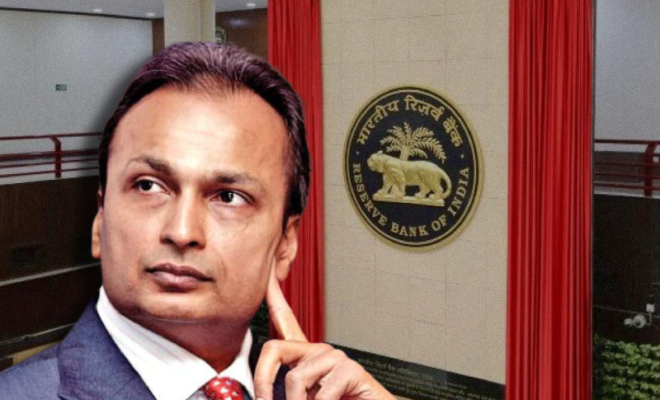Reliance Capital collapses as RBI heads it to bankruptcy tribunal

![]() Delhi -The Shadow banking industry has claimed its biggest casualty yet since 2018’s loss of confidence in the market. On Monday evening, the Reserve Bank of India (RBI) made a surprise announcement that it had replaced the board of Reliance Capital, the financier controlled by Anil Ambani, and would be sending the company to bankruptcy tribunal.
Delhi -The Shadow banking industry has claimed its biggest casualty yet since 2018’s loss of confidence in the market. On Monday evening, the Reserve Bank of India (RBI) made a surprise announcement that it had replaced the board of Reliance Capital, the financier controlled by Anil Ambani, and would be sending the company to bankruptcy tribunal.
The collapse of Reliance Capital Ltd is a perfect example that explains why the central bank is reluctant, rather hates the presence of big conglomerates in the banking sector. This is despite the fact that the inclusion of corporate capital into the sector can bolster credit growth. The RBI argues that corporate financiers can in fact cause more harm than good even without insured deposits access.
Anil Ambani’s Reliance Communications’ mobile services were shuttered down four years ago. Creditors, including the government, are still struggling to recover 758 billion rupees ($10 billion) owed to them by the company. Junior Ambani’s misery has been painfully real since then. Last year, the former billionaire was ordered by a London judge to pay three Chinese banks more than $700 million. These banks had lent money to Reliance Communications against Ambani’s personal guarantees.
Related Posts
Now after Reliance Capital has become yet another company by Anil Ambani to have joined the ‘bankruptcy slaughterhouse’, investors are going to get a much clear picture as to why the $3 billion worth of the company has been wiped out. According to the Reserve Bank of India, the “serious governance concerns” in a company that were failed to be addressed by the leadership of the company are the main reasons for its outcome. The RBI says that these concerns must come out in public now, and hopefully will prevent such future blowouts of companies.
It is to be noted that with Reliance Capital reflecting nearly $9 billion in assets, as per its latest annual report, the creditors’ $2.9 billion liability could have been easily met. But this was contrary – for more than two years various orders by debt recovery tribunals and court have prevented company from releasing assets.



